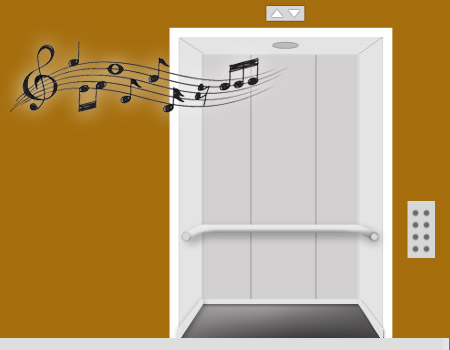| MATERIAL LIFTS | CAB FIXTURES | LOBBY FIXTURES | SAVARIA | WHEELCHAIR LIFTS | MODERNIZATION |
March 19th, 2020
History of Elevator Music

When it comes to the musical tones on an "ascending room," it's the soothing effect of soft tones that seems to do the trick, at least back in the days of "elevator music." Yes, back in the "good ole days" when building owners included a way to listen to music while riding an elevator, and probably for good reason, as early elevators were not as advanced in smoothness as they are today.
There was also the lack of electronic controls back then, as elevator doors had to be shut manually by a real person. Yes, there were professional elevator operators back in those days who were in charge of pushing all the buttons, and also greeting the passengers to ensure that a professional was in control of the ride.
Going back in time...
As early as the third century B.C.E, primitive elevators were operated by several forms of energy, including human, animal and water. It was a long haul between that era and 1743, when a counter-weighted man-powered personal elevator was built for King Louis XV, making an easy to connect his apartment in Versailles with that of his mistress.
The history of elevator music doesn't go back to the days of King Louis XV, but there was actually an era that was recognized as the beginning of elevator music. It began decades ago with some passengers describing elevator music as..
"Seriously lacking in distinctive and interesting characteristics."
Indeed, elevator technology has come a long way since the beginning days of the "ascending room," and mainly because of advancements in smoothness, electronics and safety (especially since Otis cut the cord on himself). Yes, there were some rough spots in those days, but thanks to elevator music, things calmed down a bit.
Elevator Operators
Most of us enjoy listening to music, and for different reasons. Some enjoy the punch of hard rock, some enjoy the swing of jazz, and others my need something energetic to get them out on the dance floor. But there's one common denominator in all musical genres, and that is the fact that music hits an emotional nerve in all of us. Elevator operators knew this back in the 1920's and 1930's, as it was their responsibility to keep nervous first-time elevator passengers calm during the ride.
Muzak
By the 1930s, music had became a common part of many elevator systems. Despite simpler levels of lift technology, elevators were smooth and quiet enough that elevator music was clearly audible. Passengers could easily hear the unremarkable musical tunes as the cab traveled through the shaft. Thanks to Muzak, the long elevator rides in tall buildings like the Empire State Building were more tolerable with gentle instrumentals that eased nervous tension just enough to keep restless passengers lightly entertained. And those repeating instrumentals that finally lost their steam over time eventually evolved into more cruisey tunes and finally helped elevator music to gain some popularity.
A rather "boring" ride..
But it wasn't just the nervous passengers, it was also the simple fact that early elevators were slower, subsequently making the ride from floor to floor rather boring. Even though elevators were fairly smooth then, there may have been some nervous passengers who were not only first-time riders, but still a little anxious to get off from a long slow ride. So the job of elevator operator was two fold, as they tried to transport passengers with an enjoyable ride while manually operating the elevator controls. Relying on their hand skills, an operator ran the lift with an adjustable sliding lever that raised, lowered and stopped the lift, while attempting to minimizing fear and boredom. Thanks to the soothing effects of background melodies, the fear and boredom may have subsided a bit, but who really knows. Not many people who were old enough to remember what it was really like back then are still alive today to give a good testimony. Supposedly, music really did calmed their nerves and alleviate boredom, allowing operators the ability to multi-task more effectively.
There are currently industry lift-systems in operation that still require a human operator to manually operate specific controls. These type of lift-systems typically operate in the capacity of freight or temporary construction elevators, and most likely without any music.
Elevator music today?..
Elevator music was a radical new idea back then, but now it might seem awkward to actually hear music on a modern elevator. The technology behind present-day elevators include technology that enable emergency telephones, alarms, cameras, sensors, high-speed travel up to 40 mph, and technical terms you've probably never heard of, such as machine-room-less technology, gearless traction design, precision traffic control, destination dispatch control software to name just a few.
Well, so much for the music, but maybe it will make a come-back someday...






